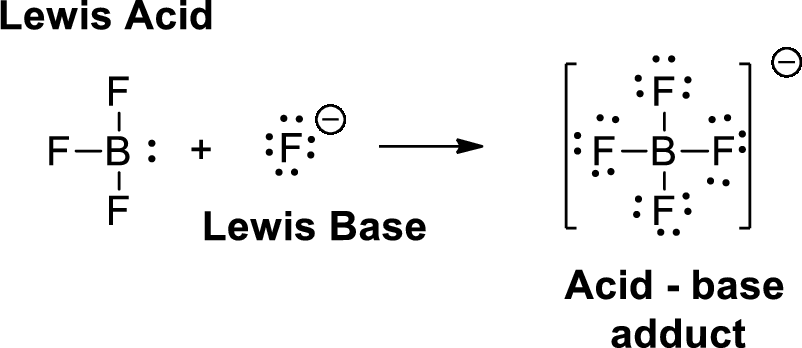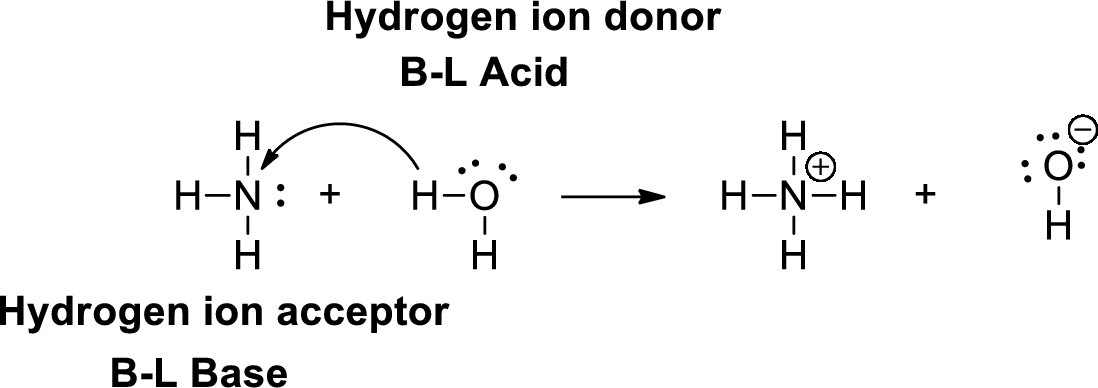
CHEMISTRY MOLECULAR NATURE OF MATTER AND
9th Edition
ISBN: 9781266568718
Author: SILBERBERG
Publisher: MCG
expand_more
expand_more
format_list_bulleted
Concept explainers
Question
Chapter 18, Problem 18.161P
Interpretation Introduction
Interpretation:
The overall reaction has to written for the both Lewis and Brønsted-Lowry acid base reactions.
Concept introduction:
Lewis definition:
A Lewis acid is a substance that can accept and share an electron pair. A Lewis base is a substance that can donate and share an electron pair.

Bronsted –Lowry definitions:
A Bronsted –Lowry acid is a proton donor, it donates a hydrogen ion,

Expert Solution & Answer
Want to see the full answer?
Check out a sample textbook solution
Students have asked these similar questions
Don't used hand raiting and don't used Ai solution
Don't used Ai solution and don't used hand raiting
OA. For the structure shown, rank the bond lengths (labeled a, b and c) from shortest to longest. Place your answer in
the box. Only the answer in the box will be graded. (2 points)
H
-CH3
THe
b
Н
Chapter 18 Solutions
CHEMISTRY MOLECULAR NATURE OF MATTER AND
Ch. 18.2 - Prob. 18.1AFPCh. 18.2 - Prob. 18.1BFPCh. 18.2 - Prob. 18.2AFPCh. 18.2 - Prob. 18.2BFPCh. 18.2 - Prob. 18.3AFPCh. 18.2 - Prob. 18.3BFPCh. 18.3 - Prob. 18.4AFPCh. 18.3 - Prob. 18.4BFPCh. 18.4 - Prob. 18.5AFPCh. 18.4 - Prob. 18.5BFP
Ch. 18.5 - Prob. 18.6AFPCh. 18.5 - Prob. 18.6BFPCh. 18.5 - Prob. 18.7AFPCh. 18.5 - Prob. 18.7BFPCh. 18.5 - Prob. 18.8AFPCh. 18.5 - Prob. 18.8BFPCh. 18.5 - Prob. 18.9AFPCh. 18.5 - Prob. 18.9BFPCh. 18.7 - Prob. 18.10AFPCh. 18.7 - Prob. 18.10BFPCh. 18.7 - Prob. 18.11AFPCh. 18.7 - Prob. 18.11BFPCh. 18.8 - Prob. 18.12AFPCh. 18.8 - Prob. 18.12BFPCh. 18.8 - Prob. 18.13AFPCh. 18.8 - Prob. 18.13BFPCh. 18.10 - Prob. 18.14AFPCh. 18.10 - Prob. 18.14BFPCh. 18 - Prob. 18.1PCh. 18 - Prob. 18.2PCh. 18 - Prob. 18.3PCh. 18 - Prob. 18.4PCh. 18 - Prob. 18.5PCh. 18 - Prob. 18.6PCh. 18 - Which of the following are Arrhenius...Ch. 18 - Prob. 18.8PCh. 18 - Prob. 18.9PCh. 18 - A Brønstcd-Lowry acid-base reaction proceeds in...Ch. 18 - Prob. 18.11PCh. 18 - Give the formula of the conjugate...Ch. 18 - Give the formula of the conjugate base:
Ch. 18 - Give the formula of the conjugate...Ch. 18 - Prob. 18.15PCh. 18 - Prob. 18.16PCh. 18 - In each equation, label the acids, bases, and...Ch. 18 - Prob. 18.18PCh. 18 - Prob. 18.19PCh. 18 - Prob. 18.20PCh. 18 - Prob. 18.21PCh. 18 - Prob. 18.22PCh. 18 - The following aqueous species constitute two...Ch. 18 - Prob. 18.24PCh. 18 - Use Figure 18.8 to determine whether Kc > 1...Ch. 18 - Prob. 18.26PCh. 18 - Prob. 18.27PCh. 18 - Prob. 18.28PCh. 18 - Prob. 18.29PCh. 18 - Prob. 18.30PCh. 18 - Which solution has the higher pH? Explain.
A 0.1 M...Ch. 18 - Prob. 18.32PCh. 18 - Prob. 18.33PCh. 18 - Prob. 18.34PCh. 18 - Prob. 18.35PCh. 18 - Prob. 18.36PCh. 18 - Prob. 18.37PCh. 18 - Prob. 18.38PCh. 18 - Prob. 18.39PCh. 18 - The two molecular scenes shown depict the relative...Ch. 18 - Prob. 18.41PCh. 18 - Prob. 18.42PCh. 18 - Prob. 18.43PCh. 18 - Prob. 18.44PCh. 18 - Prob. 18.45PCh. 18 - (a) What is the pH of 0.0111 M NaOH? Is the...Ch. 18 - (a) What is the pH of 0.0333 M HNO3? Is the...Ch. 18 - Prob. 18.48PCh. 18 - (a) What is the pH of 7.52×10−4 M CsOH? Is the...Ch. 18 - Prob. 18.50PCh. 18 - Prob. 18.51PCh. 18 - Prob. 18.52PCh. 18 - Prob. 18.53PCh. 18 - Prob. 18.54PCh. 18 - Prob. 18.55PCh. 18 - Prob. 18.56PCh. 18 - Prob. 18.57PCh. 18 - Prob. 18.58PCh. 18 - Prob. 18.59PCh. 18 - Prob. 18.60PCh. 18 - Prob. 18.61PCh. 18 - Prob. 18.62PCh. 18 - Prob. 18.63PCh. 18 - Prob. 18.64PCh. 18 - Prob. 18.65PCh. 18 - Prob. 18.66PCh. 18 - Prob. 18.67PCh. 18 - Hypochlorous acid, HClO, has a pKa of 7.54. What...Ch. 18 - Prob. 18.69PCh. 18 - Prob. 18.70PCh. 18 - Prob. 18.71PCh. 18 - Prob. 18.72PCh. 18 - Prob. 18.73PCh. 18 - Prob. 18.74PCh. 18 - Prob. 18.75PCh. 18 - Prob. 18.76PCh. 18 - Prob. 18.77PCh. 18 - Prob. 18.78PCh. 18 - Prob. 18.79PCh. 18 - Prob. 18.80PCh. 18 - Prob. 18.81PCh. 18 - Formic acid, HCOOH, the simplest carboxylic acid,...Ch. 18 - Across a period, how does the electronegativity of...Ch. 18 - How does the atomic size of a nonmetal affect the...Ch. 18 - Prob. 18.85PCh. 18 - Prob. 18.86PCh. 18 - Prob. 18.87PCh. 18 - Prob. 18.88PCh. 18 - Choose the stronger acid in each of the following...Ch. 18 - Prob. 18.90PCh. 18 - Prob. 18.91PCh. 18 - Prob. 18.92PCh. 18 - Use Appendix C to choose the solution with the...Ch. 18 - Prob. 18.94PCh. 18 - Prob. 18.95PCh. 18 - Prob. 18.96PCh. 18 - Prob. 18.97PCh. 18 - Prob. 18.98PCh. 18 - Prob. 18.99PCh. 18 - Prob. 18.100PCh. 18 - Prob. 18.101PCh. 18 - Prob. 18.102PCh. 18 - Prob. 18.103PCh. 18 - Prob. 18.104PCh. 18 - Prob. 18.105PCh. 18 - Prob. 18.106PCh. 18 - Prob. 18.107PCh. 18 - What is the pKb of ?
What is the pKa of the...Ch. 18 - Prob. 18.109PCh. 18 - Prob. 18.110PCh. 18 - Prob. 18.111PCh. 18 - Prob. 18.112PCh. 18 - Prob. 18.113PCh. 18 - Prob. 18.114PCh. 18 - Prob. 18.115PCh. 18 - Prob. 18.116PCh. 18 - Prob. 18.117PCh. 18 - Prob. 18.118PCh. 18 - Prob. 18.119PCh. 18 - Prob. 18.120PCh. 18 - Prob. 18.121PCh. 18 - Prob. 18.122PCh. 18 - Prob. 18.123PCh. 18 - Explain with equations and calculations, when...Ch. 18 - Prob. 18.125PCh. 18 - Prob. 18.126PCh. 18 - Rank the following salts in order of increasing pH...Ch. 18 - Rank the following salts in order of decreasing pH...Ch. 18 - Prob. 18.129PCh. 18 - Prob. 18.130PCh. 18 - Prob. 18.131PCh. 18 - Prob. 18.132PCh. 18 - Prob. 18.133PCh. 18 - Prob. 18.134PCh. 18 - Prob. 18.135PCh. 18 - Prob. 18.136PCh. 18 - Prob. 18.137PCh. 18 - Prob. 18.138PCh. 18 - Which are Lewis acids and which are Lewis...Ch. 18 - Prob. 18.140PCh. 18 - Prob. 18.141PCh. 18 - Prob. 18.142PCh. 18 - Prob. 18.143PCh. 18 - Classify the following as Arrhenius,...Ch. 18 - Chloral (Cl3C—CH=O) forms a monohydrate, chloral...Ch. 18 - Prob. 18.146PCh. 18 - Prob. 18.147PCh. 18 - Prob. 18.148PCh. 18 - Prob. 18.149PCh. 18 - Prob. 18.150PCh. 18 - Prob. 18.151PCh. 18 - Prob. 18.152PCh. 18 - Prob. 18.153PCh. 18 - The strength of an acid or base is related to its...Ch. 18 - Prob. 18.155PCh. 18 - Three beakers contain 100. mL of 0.10 M HCl,...Ch. 18 - Prob. 18.157PCh. 18 - Prob. 18.158PCh. 18 - Prob. 18.159PCh. 18 - Prob. 18.160PCh. 18 - Prob. 18.161PCh. 18 - What is the pH of a vinegar with 5.0% (w/v) acetic...Ch. 18 - Prob. 18.163PCh. 18 - Prob. 18.164PCh. 18 - Prob. 18.165PCh. 18 - Prob. 18.166PCh. 18 - Prob. 18.167PCh. 18 - Prob. 18.168PCh. 18 - Prob. 18.169PCh. 18 - Prob. 18.170PCh. 18 - Prob. 18.171PCh. 18 - Prob. 18.172PCh. 18 - Prob. 18.173PCh. 18 - Prob. 18.174PCh. 18 - Prob. 18.175PCh. 18 - Prob. 18.176PCh. 18 - Prob. 18.177PCh. 18 - Prob. 18.178PCh. 18 - Prob. 18.179PCh. 18 - Prob. 18.180PCh. 18 - Prob. 18.181PCh. 18 - Prob. 18.182PCh. 18 - Prob. 18.183PCh. 18 - Drinking water is often disinfected with Cl2,...Ch. 18 - Prob. 18.185P
Knowledge Booster
Learn more about
Need a deep-dive on the concept behind this application? Look no further. Learn more about this topic, chemistry and related others by exploring similar questions and additional content below.Similar questions
- Don't used hand raitingarrow_forwardQuizzes - Gen Organic & Biological Che... ☆ myd21.lcc.edu + O G screenshot on mac - Google Search savings hulu youtube google disney+ HBO zlib Homework Hel...s | bartleby cell bio book Yuzu Reader: Chemistry G periodic table - Google Search b Home | bartleby 0:33:26 remaining CHEM 120 Chapter 5_Quiz 3 Page 1: 1 > 2 > 3 > 6 ¦ 5 > 4 > 7 ¦ 1 1 10 8 ¦ 9 a ¦ -- Quiz Information silicon-27 A doctor gives a patient 0.01 mC i of beta radiation. How many beta particles would the patient receive in I minute? (1 Ci = 3.7 x 10 10 d/s) Question 5 (1 point) Saved Listen 2.22 x 107 222 x 108 3.7 x 108 2.22 x 108 none of the above Question 6 (1 point) Listen The recommended dosage of 1-131 for a test is 4.2 μCi per kg of body mass. How many millicuries should be given to a 55 kg patient? (1 mCi = 1000 μСi)? 230 mCiarrow_forwardDon't used hand raiting and don't used Ai solutionarrow_forward
- Don't used hand raiting and don't used Ai solutionarrow_forwardQ3: Arrange each group of compounds from fastest SN2 reaction rate to slowest SN2 reaction rate. CI Cl H3C-Cl CI a) A B C D Br Br b) A B C Br H3C-Br Darrow_forwardQ4: Rank the relative nucleophilicity of halide ions in water solution and DMF solution, respectively. F CI Br | Q5: Determine which of the substrates will and will not react with NaSCH3 in an SN2 reaction to have a reasonable yield of product. NH2 Br Br Br .OH Brarrow_forward
- Classify each molecule as optically active or inactive. Determine the configuration at each H соон Chirality center OH 애 He OH H3C Ноос H H COOH A K B.arrow_forwardQ1: Rank the relative nucleophilicity of the following species in ethanol. CH3O¯, CH3OH, CH3COO, CH3COOH, CH3S Q2: Group these solvents into either protic solvents or aprotic solvents. Acetonitrile (CH3CN), H₂O, Acetic acid (CH3COOH), Acetone (CH3COCH3), CH3CH2OH, DMSO (CH3SOCH3), DMF (HCON(CH3)2), CH3OHarrow_forwardDon't used hand raiting and don't used Ai solutionarrow_forward
- 10. The main product of the following reaction is [1.1:4',1"-terphenyl]-2'-yl(1h-pyrazol-4- yl)methanone Ph N-H Pharrow_forwardDraw the Fischer projection for a D-aldo-pentose. (aldehyde pentose). How many total stereoisomers are there? Name the sugar you drew. Draw the Fischer projection for a L-keto-hexose. (ketone pentose). How many total stereoisomers are there? Draw the enantiomer.arrow_forwardDraw a structure using wedges and dashes for the following compound: H- Et OH HO- H H- Me OHarrow_forward
arrow_back_ios
SEE MORE QUESTIONS
arrow_forward_ios
Recommended textbooks for you
 ChemistryChemistryISBN:9781305957404Author:Steven S. Zumdahl, Susan A. Zumdahl, Donald J. DeCostePublisher:Cengage Learning
ChemistryChemistryISBN:9781305957404Author:Steven S. Zumdahl, Susan A. Zumdahl, Donald J. DeCostePublisher:Cengage Learning ChemistryChemistryISBN:9781259911156Author:Raymond Chang Dr., Jason Overby ProfessorPublisher:McGraw-Hill Education
ChemistryChemistryISBN:9781259911156Author:Raymond Chang Dr., Jason Overby ProfessorPublisher:McGraw-Hill Education Principles of Instrumental AnalysisChemistryISBN:9781305577213Author:Douglas A. Skoog, F. James Holler, Stanley R. CrouchPublisher:Cengage Learning
Principles of Instrumental AnalysisChemistryISBN:9781305577213Author:Douglas A. Skoog, F. James Holler, Stanley R. CrouchPublisher:Cengage Learning Organic ChemistryChemistryISBN:9780078021558Author:Janice Gorzynski Smith Dr.Publisher:McGraw-Hill Education
Organic ChemistryChemistryISBN:9780078021558Author:Janice Gorzynski Smith Dr.Publisher:McGraw-Hill Education Chemistry: Principles and ReactionsChemistryISBN:9781305079373Author:William L. Masterton, Cecile N. HurleyPublisher:Cengage Learning
Chemistry: Principles and ReactionsChemistryISBN:9781305079373Author:William L. Masterton, Cecile N. HurleyPublisher:Cengage Learning Elementary Principles of Chemical Processes, Bind...ChemistryISBN:9781118431221Author:Richard M. Felder, Ronald W. Rousseau, Lisa G. BullardPublisher:WILEY
Elementary Principles of Chemical Processes, Bind...ChemistryISBN:9781118431221Author:Richard M. Felder, Ronald W. Rousseau, Lisa G. BullardPublisher:WILEY

Chemistry
Chemistry
ISBN:9781305957404
Author:Steven S. Zumdahl, Susan A. Zumdahl, Donald J. DeCoste
Publisher:Cengage Learning

Chemistry
Chemistry
ISBN:9781259911156
Author:Raymond Chang Dr., Jason Overby Professor
Publisher:McGraw-Hill Education

Principles of Instrumental Analysis
Chemistry
ISBN:9781305577213
Author:Douglas A. Skoog, F. James Holler, Stanley R. Crouch
Publisher:Cengage Learning

Organic Chemistry
Chemistry
ISBN:9780078021558
Author:Janice Gorzynski Smith Dr.
Publisher:McGraw-Hill Education

Chemistry: Principles and Reactions
Chemistry
ISBN:9781305079373
Author:William L. Masterton, Cecile N. Hurley
Publisher:Cengage Learning

Elementary Principles of Chemical Processes, Bind...
Chemistry
ISBN:9781118431221
Author:Richard M. Felder, Ronald W. Rousseau, Lisa G. Bullard
Publisher:WILEY
General Chemistry | Acids & Bases; Author: Ninja Nerd;https://www.youtube.com/watch?v=AOr_5tbgfQ0;License: Standard YouTube License, CC-BY